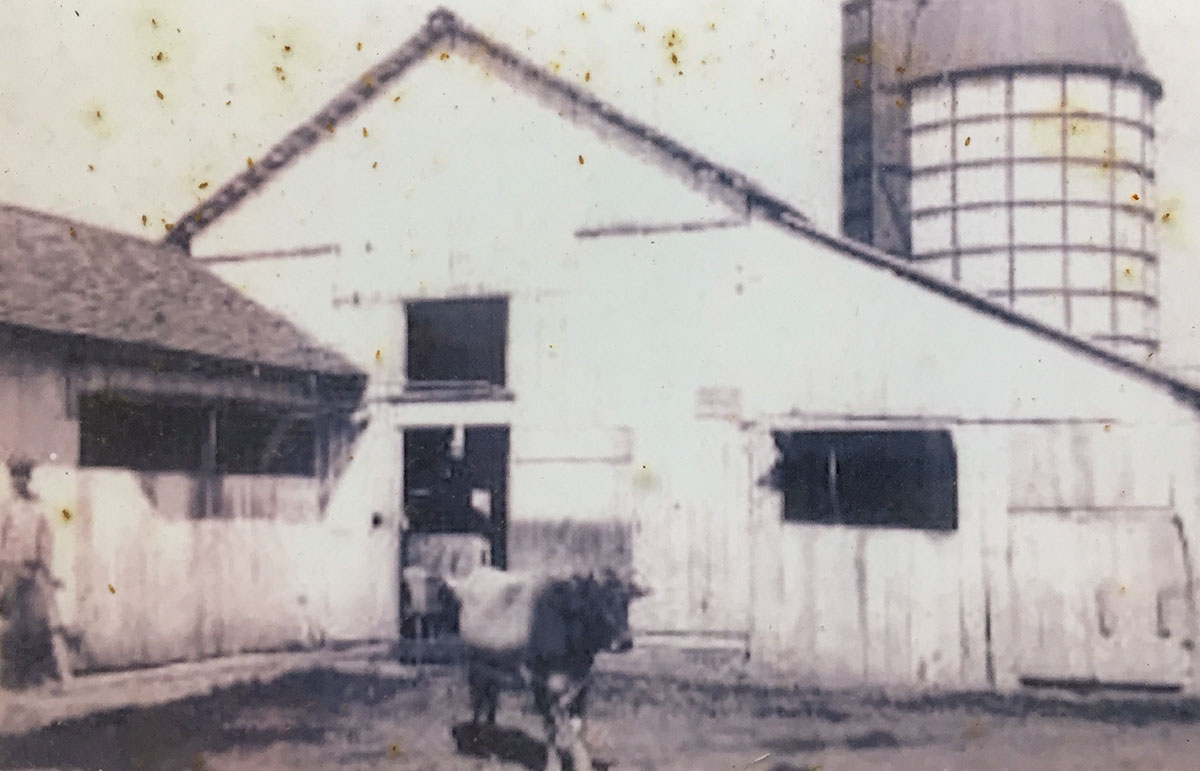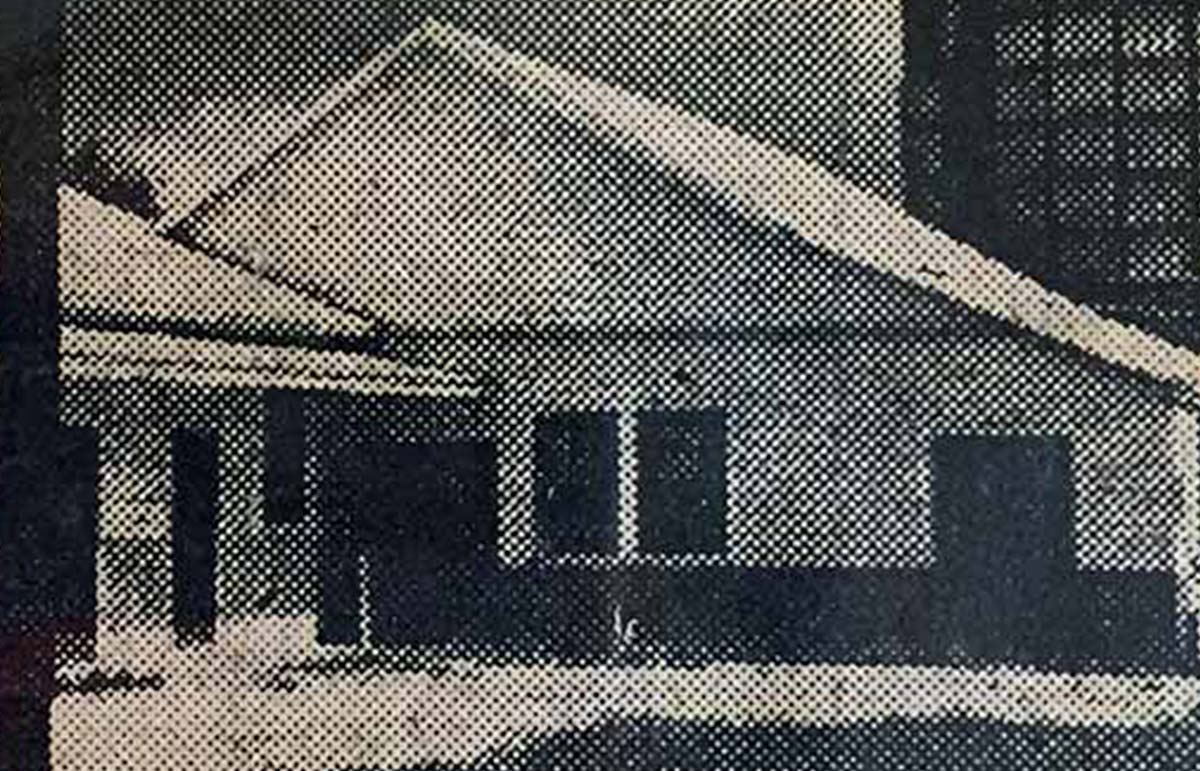

Residence Dairy: 1928 / 1940’s.
In the late 1890’s Volumnia Barrow Slatter owned and lived on Volumnia Farm in Terrebonne Parish, Louisiana, with her daughter Clara and Clara’s husband Wilson Gaidry, son of the owner of a general store located on the property where the Holy Rosary Church in Houma is located today.
The South was still trying to recover from the devastation of the Civil War and farms were having a tough time surviving economically; Residence being no exception. Volumnia knew little about running a farm, and like most farm owners of the time was accustomed to a life of luxury; many farms were lost because the owners did not know how to work or change their lifestyle in hard economic times.
Wilson was of Cajun of French descent, accustomed to hard work. He was willing to do whatever he had to do to keep the farm going, and began overseeing the work in the cane fields.
Sugarcane was the main cash crop grown on the farm but at that time farms also had farm animals; pigs, chickens and cows for meat, milk and eggs. All of the proceeds from the sugarcane went to Volumnia to pay for the taxes on the property and the upkeep of the house and farm buildings and equipment.
Wilson managed to buy a dozen cows and Clara obtained 200 chickens; Wilson sold milk and eggs to the people in the town of Houma in the old milk wagon. He kept the milk money and Clara kept the egg money; that’s how Residence Dairy started.
As the town of Houma grew, so did Residence Dairy and by the mid 1950’s it was the main source of income for the farm; it had 60 milking cows, bought milk from 13 smaller dairies, had a pasteurizing and bottling plant, three delivery trucks, and employed 10 people. The dairy thrived until the 1960’s but the dairy business was very labor intensive and could not compete for labor from the growing oil industry in the Parish in the 1960’s.
1930 Residence Dairy calendar Until the early 1940’s the people of Terrebonne Parish lived a life of self subsistence; almost everyone had a few acres of land with a garden, a few cattle, pigs, chickens and sheep even if they had trades or other occupations. Those who had milk cows for their own families sold the surplus raw milk in glass jars and jugs to their neighbors and by the 1920’s and 1930’s small family owned and operated dairies and butcher shops were common in all communities.
Beginning in the late 1930’s and early 1940’s the State Government through the State Health Department began imposing regulations on the small dairies, and in order to comply the milk had to be pasteurized. My father borrowed the money to secure the equipment for a milk pasteurizing and bottling operation. Residence Dairy used the vat type pasteurization process for pasteurizing its milk. V.J. Oubre ran the operation.
It was not a simple thing: first a boiler had to be installed that ran off of natural gas to generate the steam to heat milk in the pasteurizers and to operate a sterilizer to sterilize the glass milk bottles that were used at that time. Next a complex refrigeration system had to be built to cool the milk over cooling coils before being stored in refrigerated coolers, and also to cool the milk immediately after pasteurization. All the equipment had to be stainless steel and was very expensive; most of the small dairies could not afford the equipment and had to sell their raw milk to the dairy that had the pasteurizing facilities. Some of the small dairies that sold to us were the Leverons from Bayou Blue, the Alemands from Bayou Cane, the Maulbroughs from Grand Caillou and Little Caillou.
The many small dairies were now consolidated into a handful: a trend that continues until today. Soon there will be only a few large dairy corporations in the country and even now many small dairies are still going out of business. In the early 1940’s people were coming into Houma to work in the oil field and the navy blimp base and the town’s population was growing rapidly. At that time there were no large state-wide dairies and each town had their own dairy that supplied the milk needs.
It was a time of opportunity for small dairies like Residence Dairy and Model Dairy, the two main dairies in Houma, to flourish. Residence Dairy grew rapidly and by the mid 1940’s had two delivery trucks, one for wholesale and one for retail (house to house deliveries) and was producing and selling 3,000 quarts of milk daily. The wholesale route sold to stores and the retail went every other day down every street in Houma delivering house to house.

The milk was sold in quart glass bottles and a customer would leave the number of empty bottles on the porch of the house to indicate the number of bottles of milk they wanted that day. The empty bottles had to be brought to the dairy and steam sterilized to be used again. The Residence Dairy was also milking 60 of its own cows besides buying milk from other small dairy in the Parish to meet the demand. The whole operation was very labor intensive; the pasteurizing and bottling plant worked six days a week and the milking barn worked 24/7; the cows had to be milked twice a day, every day, year around without stopping.
Prosper Voclain and Don Bourg took care of Residence Dairy’s 60 cows. In the late 1950’s big out of state and out of town milk companies begin to sell milk in Terrebonne Parish and there was a price war that ensued. The purpose was for the big dairy companies to drive the little dairies out of business, much like the Walmart have driven the little stores out of business today. Competition from large dairies and competition for the labor force from the oil companies sealed the fate of the local family owned dairies in Terrebonne Parish. In 1966 Volumnia Farm took all its female dairy cattle and purchased beef cattle bulls and switched from a dairy cattle production to a beef cattle production which is still in operation today.
The Farm today is farming 1,000 acres of land, has 300 head of beef cattle and produces 1,500,000 pounds of hay annually.
The milk wagon
In the late 1890’s Volumnia Barrow Slatter owned and lived on Volumnia Farm in Terrebonne Parish, Louisiana, with her daughter Clara and Clara’s husband Wilson Gaidry, son of the owner of a general store located on the property where the Holy Rosary Church in Houma is located today.

The South was still trying to recover from the devastation of the Civil War and farms were having a tough time surviving economically; Residence being no exception. Volumnia knew little about running a farm, and like most farm owners of the time was accustomed to a life of luxury; many farms were lost because the owners did not know how to work or change their lifestyle in hard economic times.
H.L. Gaidry Wilson was a Cajun of French descent, accustomed to hard work. He was willing to do whatever he had to do to keep the farm going, and began overseeing the work in the cane fields. Sugarcane was the main cash crop grown on the farm but at that time farms also had farm animals; pigs, chickens and cows for meat, milk and eggs. All of the proceeds from the sugarcane went to Volumnia to pay for the taxes on the property and the upkeep of the house and farm buildings and equipment.
Wilson managed to buy a dozen cows and Clara obtained 200 chickens; Wilson sold milk and eggs to the people in the town of Houma in the old milk wagon. He kept the milk money and Clara kept the egg money; that’s how Residence Dairy started.
As the town of Houma grew, so did Residence Dairy and by the mid 1950's it was the main source of income for the farm.
It had 60 milking cows, bought milk from 13 smaller dairies, had a pasteurizing and bottling plant, three delivery trucks, and employed 10 people. The dairy thrived until the 1960’s but the dairy business was very labor intensive and could not compete for labor from the growing oil industry in the Parish in the 1960’s.
Read more:
-
Introduction to Farm stories
-
1. Residence Dairy
-
2. Wild horses
-
3. The war years
-
4. Carencro bayou
-
5. The alligators
-
6. The 1928 Chevrolet truck
-
7. The 1962 Ford truck
-
8. Le Traiteur
-
9. Disciples of Percy Viosca
-
10. Grandfather's cypress swamp
-
11. Jim Jack the cot driver
-
12. Campti: then and now
-
13. Mr. Pros







